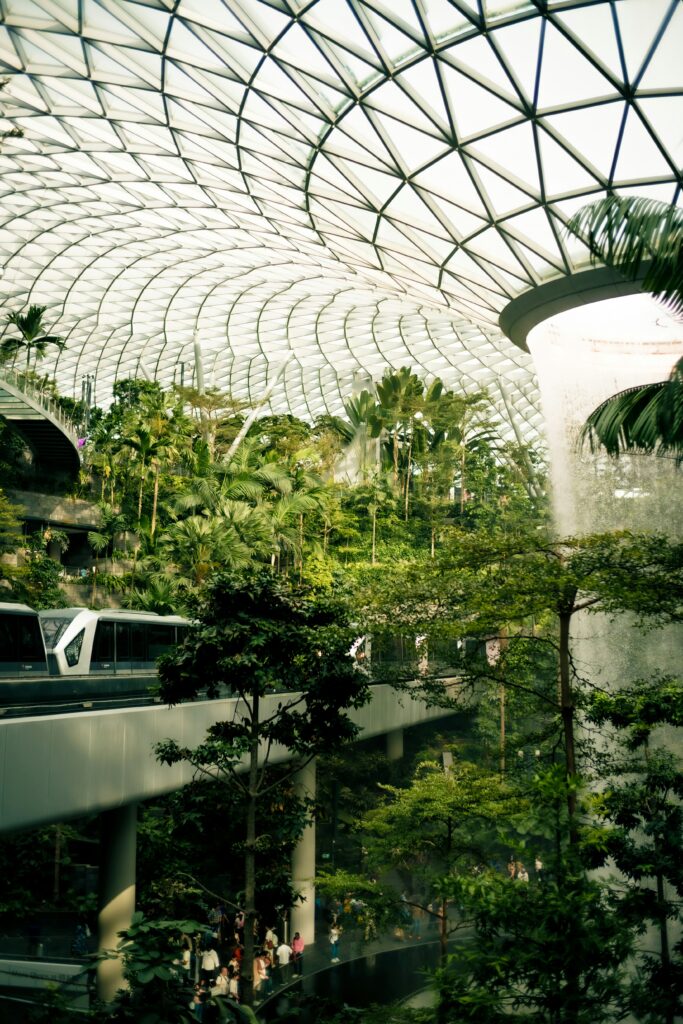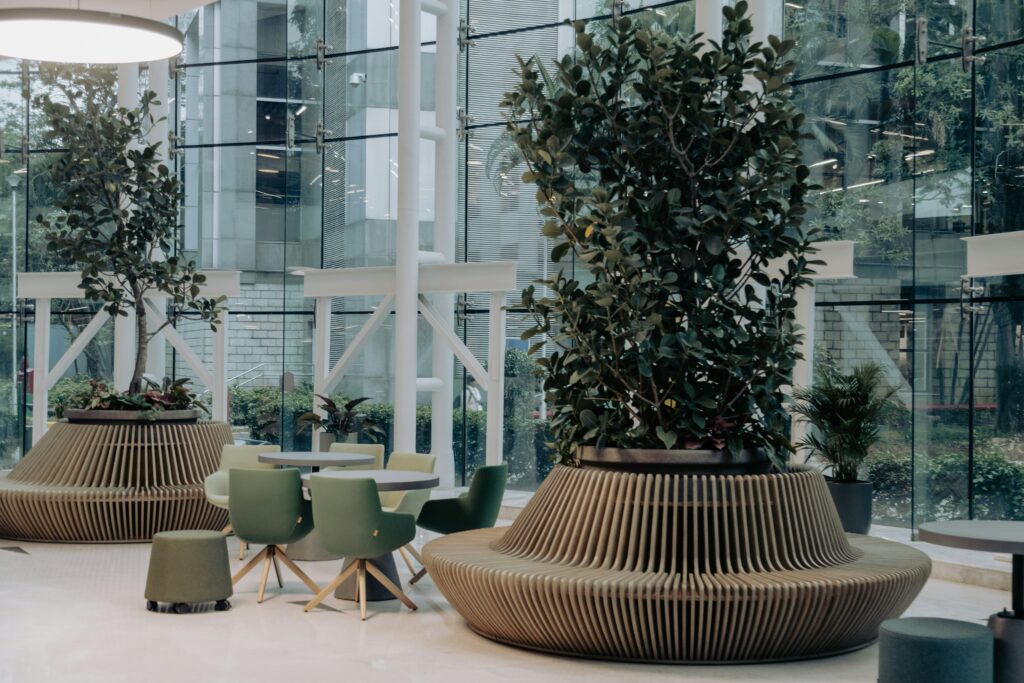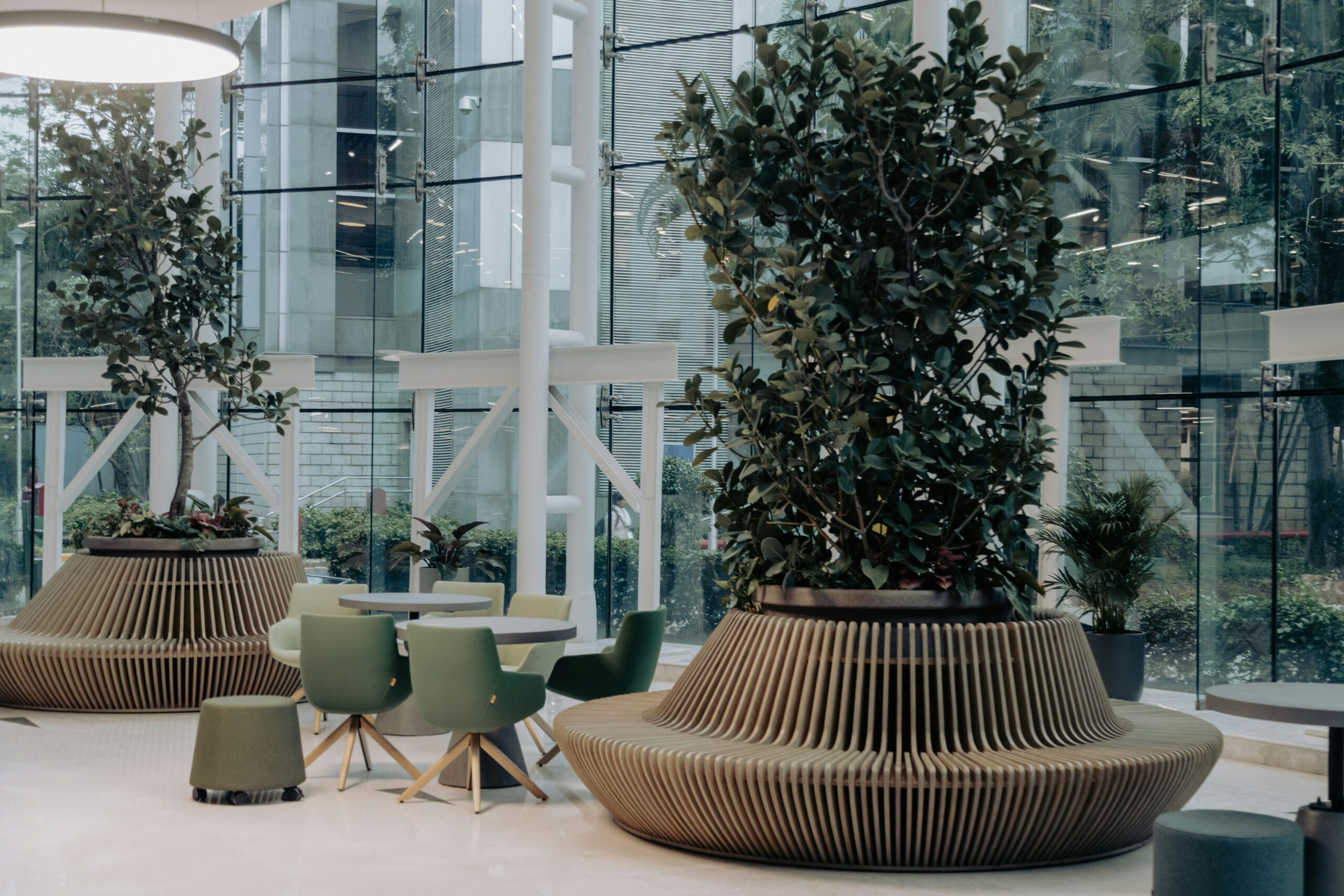By Mercedes Quintanilla.
In a world where urban life is expanding at an unprecedented rate, biophilic design emerges as a sophisticated response to the growing disconnection from nature in built environments. This revolutionary approach seeks to restore the intrinsic bond between humans and the natural world and create spaces that engage the senses while nurturing both body and mind.
According to Stephen R. Kellert, one of the pioneers in this field, biophilic design goes beyond merely including natural elements in the environment; it is about creating habitats that enhance health, well-being, and productivity for individuals in their daily lives. It is a principle that transcends aesthetics, evolving into a holistic experience that elevates the quality of life in the modern context.

Fundamental Principles of Biophilic Design
For biophilic design to be implemented effectively, it is essential to adhere to a series of principles that ensure its positive impact on those who experience it. These principles, as defined by Kellert, serve as the foundation upon which any truly biophilic space should be built:
- Ongoing Connection with Nature: Nature should not be a transient feature but a permanent, palpable component of the designed spaces.
- Human Adaptation to the Natural World: The design must be based on a profound understanding of how humans interact with their natural environment and how this can be seamlessly and effectively integrated.
- Emotional Bond with Spaces: Cultivating a genuine emotional connection with spaces that evoke a sense of belonging, calm, and renewal.
- Positive Interactions with Nature: Creating an environment that facilitates and encourages daily interactions with nature, making it an integral part of everyday life rather than an option.
- Integration of Natural Elements into Architecture: Incorporating natural materials, greenery, water, and light fluidly and aesthetically into architectural design, establishing a visual and physical relationship with the natural world.

The Transformative Benefits of Biophilic Design
Biophilic design is not simply an aesthetic trend, but a tangible investment in the physical, emotional, and mental well-being of individuals. The benefits it offers are vast and diverse, with a direct impact on the health and performance of those who inhabit these spaces.
- Physical Wellbeing: It has been shown that biophilic environments contribute to better overall health, with effects such as lower blood pressure, reduced physiological stress, and improvements in the immune system.
- Psychological Benefits: Regular exposure to nature reduces anxiety and stress, promoting greater calmness, satisfaction, and mental clarity. It also fosters creativity, problem-solving, and higher motivation levels.
- Behavioral Impact: The presence of natural elements improves focus and cognitive skills, encourages social interaction, and promotes more positive behaviors, reducing hostility and increasing cooperation and social well-being.
By incorporating these principles into design, biophilic design not only enhances the aesthetics of a space but profoundly transforms the human experience within it, creating a sanctuary of serenity and efficiency in a fast-paced world.
In the context of luxury architecture and interior design, biophilic design represents an added value that goes beyond visual appeal, providing an environment that breathes life, well-being, and exclusivity. It is the key to creating spaces that are not only beautiful and functional but also deeply healing and stimulating for the mind, body, and spirit.
References
Kellert, S. and Calabrese, E. 2015. The Practice of Biophilic Design. www.biophilic-design.comStephen
R. Kellert, J. H. (2008). Biophilic Design: The Theory, Science and Practice of Bringing Buildings to Life. Hoboken, NJ: Wiley.

Read the Comments +